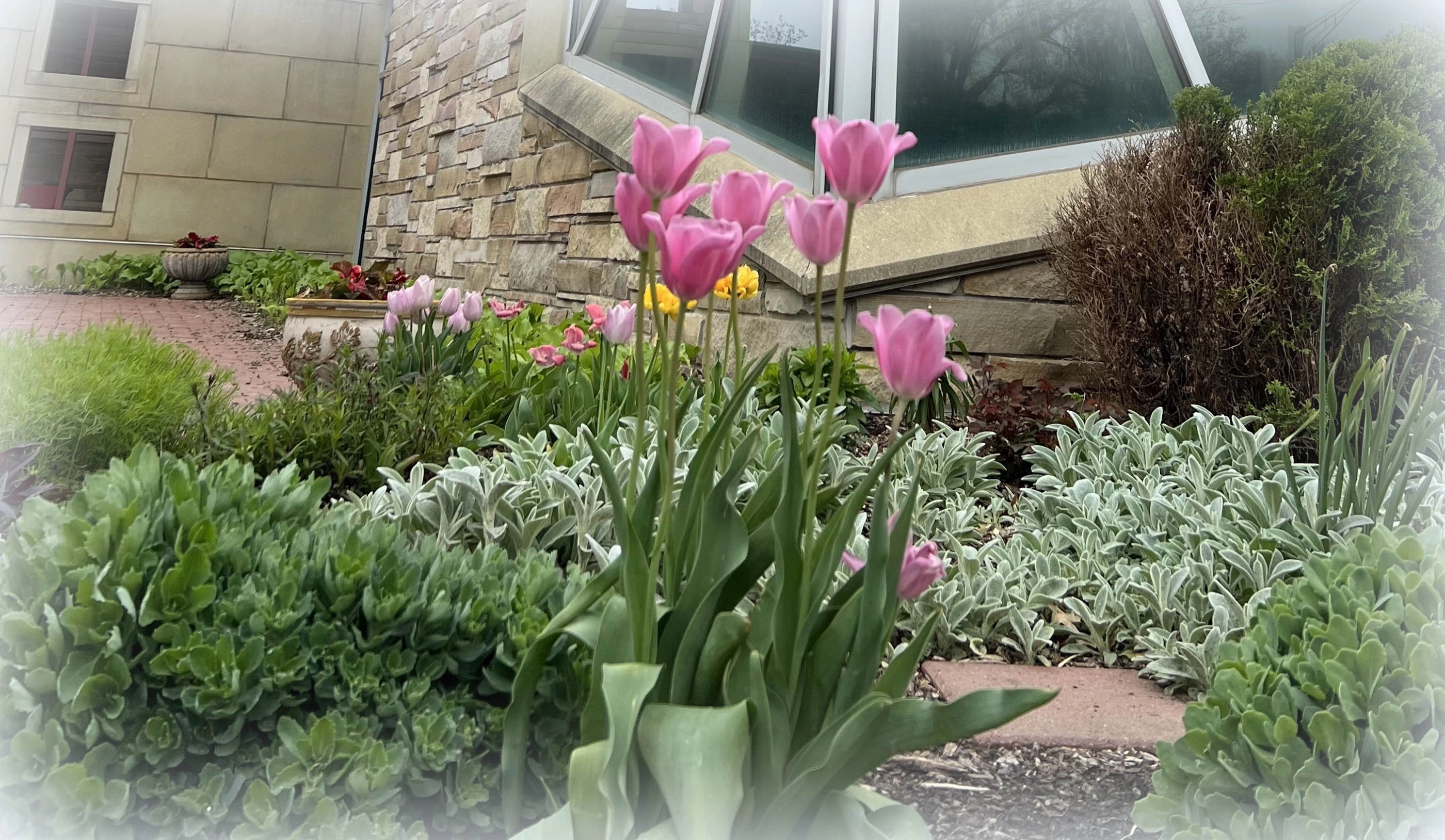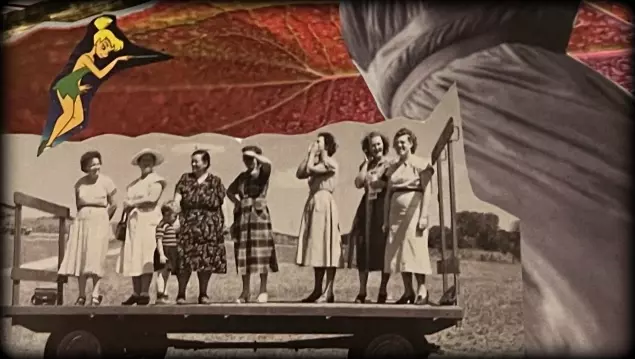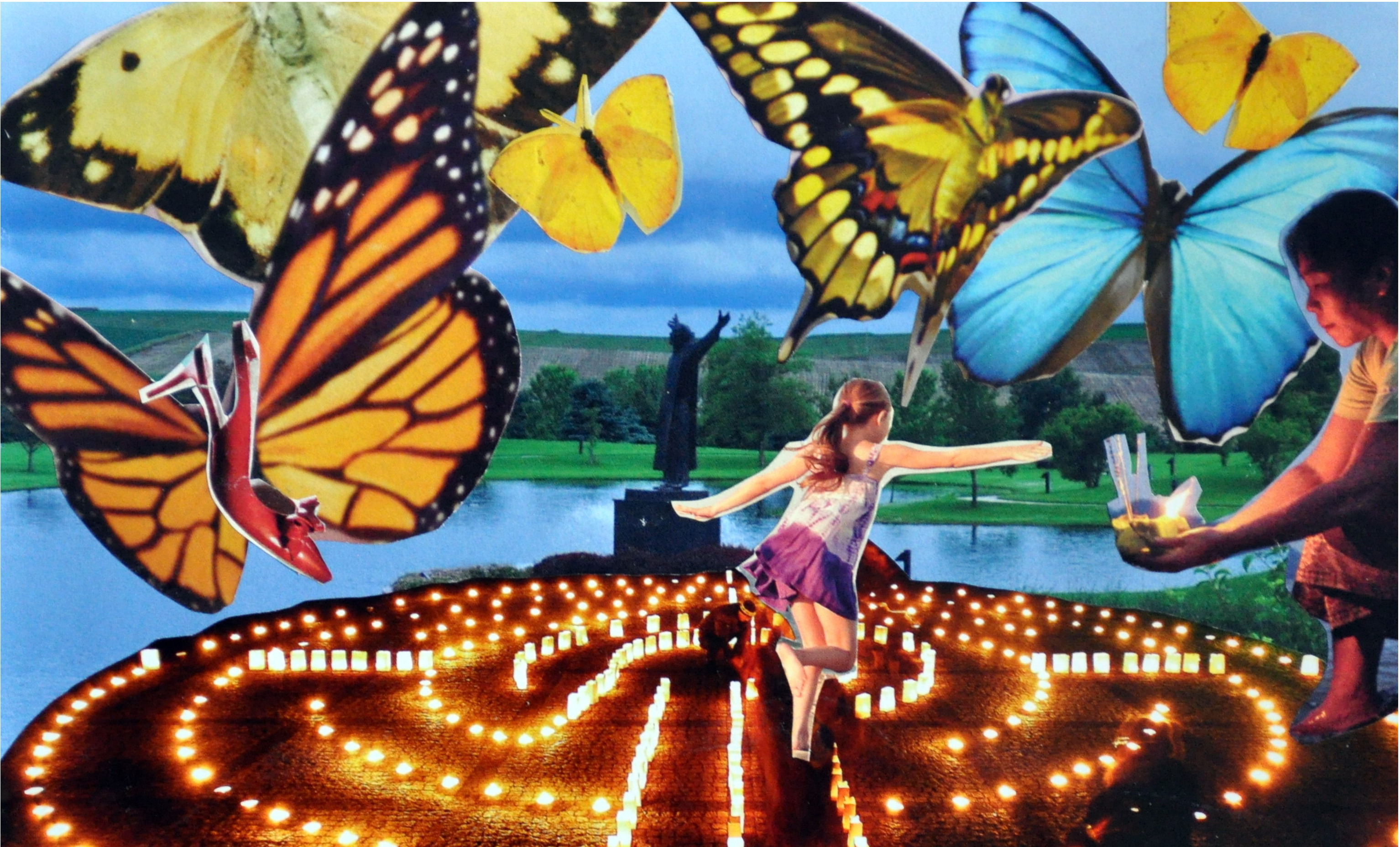One of my favorite places to visit is a former dump site.
Despite its location on the corner of a very busy intersection in Lincoln, a former landfill is now a sanctuary with thousands of flowers planted on its one-and-a-half acres. The iconic Sunken Gardens, perfect for wandering, contemplation, and enjoying the beauty of nature, has a healing garden, stunning sculptures, a cascading fountain, and open lawn spaces. Through the years, the gardens have been a special venue for weddings (although brides and grooms must be prepared for cars honking as they drive by), art shows, family picnics, contemplative walks, a quiet place to read, photography, or friendly conversations.

On one of our many sightseeing or historical tours of Lincoln as a child, my dad shared that the gardens had originally been a dump. Amazed, I couldn’t imagine how that kind of transformation could take place. In 1930, as part of a depression-era city program to help unemployed men earn a little cash, the idea of Sunken Gardens was birthed. Crew members worked eight-hour shifts, two days a week for a total of $6.40 per week. Through the years, the gardens have been improved and renovated, most recently in 2005 with a $1.7 million fundraising campaign. I am so grateful for that vision and the continued effort of volunteers to create something of such beauty from trash.
Sunken Gardens is often a specific destination for me but if I happen to be driving nearby, I might make a spontaneous visit. Recently, I had a few minutes after an appointment, and knowing the tulips and other bulb flowers wouldn’t last much longer, I drove a little out of my way to visit. It was a soulful, wonder-full fifteen minutes of enjoying the fleeting blooms. Finding wonder in nature is a path to practicing contemplation and observing silence.
St. Benedict invites us to “listen with the ear of the heart” (Rule of St. Benedict, Prologue:1).

“This calls for a contemplative stance, an ability to experience wonder and joy in nature. It can also prompt me to ask: when was the last time I really saw the swift flight of a bird, the delicate beauty of rose petals?? Rather than trying to fill every moment with sound and distraction, the Benedictine way of life is characterized by peace and silence. Benedict instructs his followers to “diligently cultivate silence” (Rule of St. Benedict, 42:1)
—Common threads: Francis’ encyclical and Benedict’s rule, By Mary McDonald SGS
I considered this dump-turned-garden as the ultimate metaphor for transformation. Truly, all things can be transformed, and have the potential to be created anew, in our planet, in ourselves, and in relationships.

God did not create creation light years ago, he continually maintains it in existence. God is constantly in the very act of creating. He fills us with his Spirit of creativity so that we can transform the world according to his creative will. –Anselm Grün OSB, Benedict and Creation
To be Benedictine is to be open to conversion within ourselves, with people we might disagree with, or in protecting our environment. We allow for the possibility of reconciliation, and restoration of how things could be at their fullest potential. Just as creation is constantly creating and evolving, so must we. We must adapt and change to the environment we are living in by not taking too much or giving too little. Enjoying nature, being in the present moment, and nurturing silence that brings creative thought is the call of Being Benedictine.






